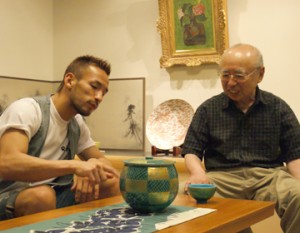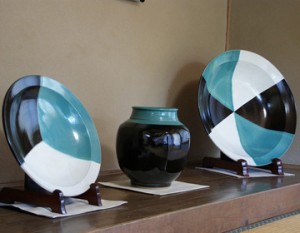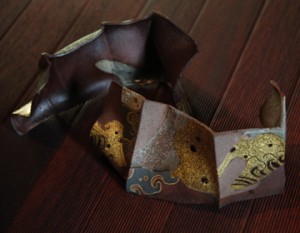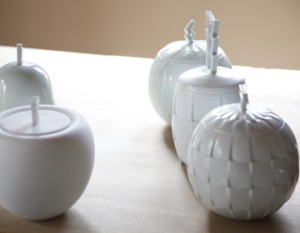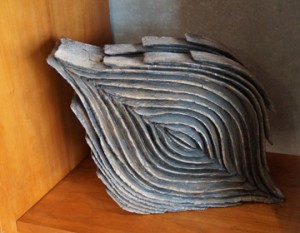Porcelain, or hakuji, is a type of porcelain that is expressed only by its white color and shape. Mr. Akihiro Maeda, who has a kiln in Kawaramachi, Tottori City, is a Living National Treasure and the holder of an Important Intangible Cultural Property in white porcelain. We will look at the history of Maeda’s choice of pure white porcelain, which he has continued to produce on his own, and his unique way of creating works of art.
“White porcelain” introduced from China
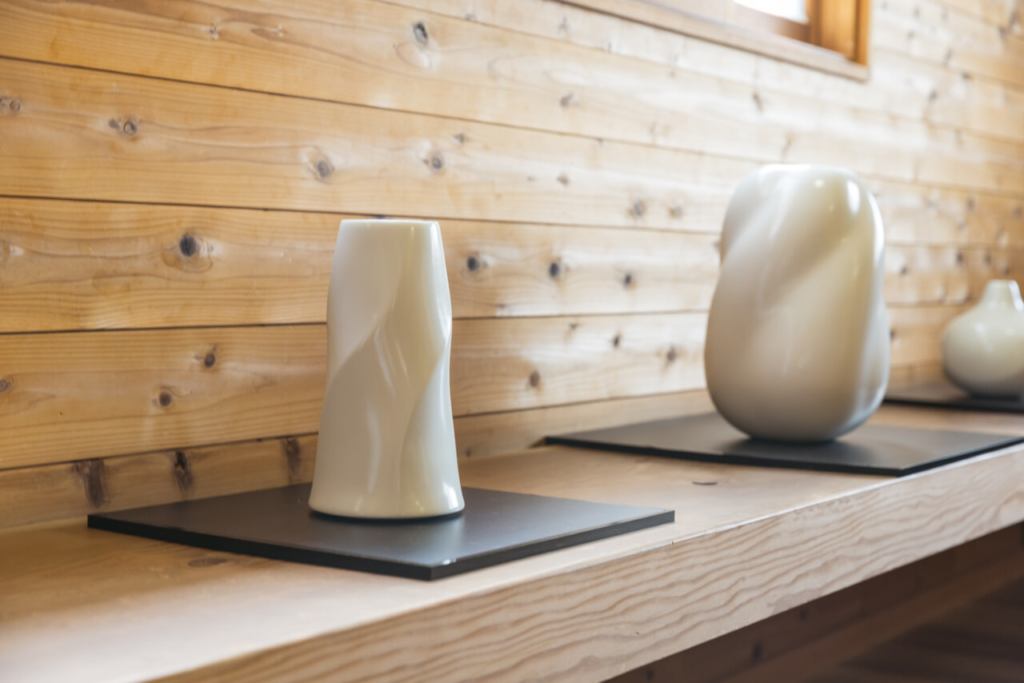
White porcelain is a type of porcelain that originated in China and is characterized by the fact that it is not painted or colored. Shades change depending on the shape, giving it a variety of expressions. Pure white porcelain dishes are easy to use on any occasion, and they are a great way to show off foodstuffs and flowers. In Japan, Arita-yaki in Saga and Hasami-yaki in Nagasaki are well known for their pottery, but Mr. Maeda chose to work alone in his hometown of Tottori, without a master.
Soft like earth, white like snow
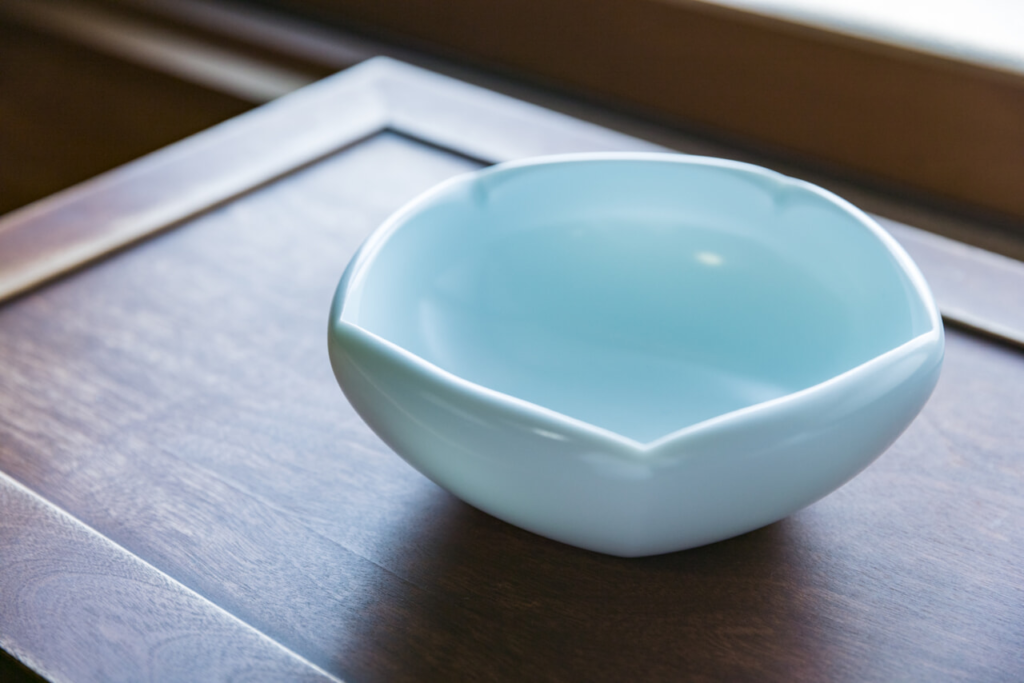
Mr. Maeda describes white porcelain as “hakuji. The word “瓷” means “tortoise” or “hard, meticulously fired pottery,” and refers to porcelain in its native China. He wanted to create works of art, not just pots, and to achieve a soft, clay-like white porcelain.
Indeed, looking at Mr. Maeda’s works, we feel a softness and warmth that is hard to believe they are porcelain. Depending on the condition of the light and the shadows created by the curved surfaces, his works also have gray and blue tints. He uses the white of snow in the San-in region as a model for his work. It is cold, yet somehow warm. And if you drill a hole in the snow, you can see a slight bluish tint. I am aiming for a moist white like snow,” he says.
Encounter with Ceramics and White Porcelain
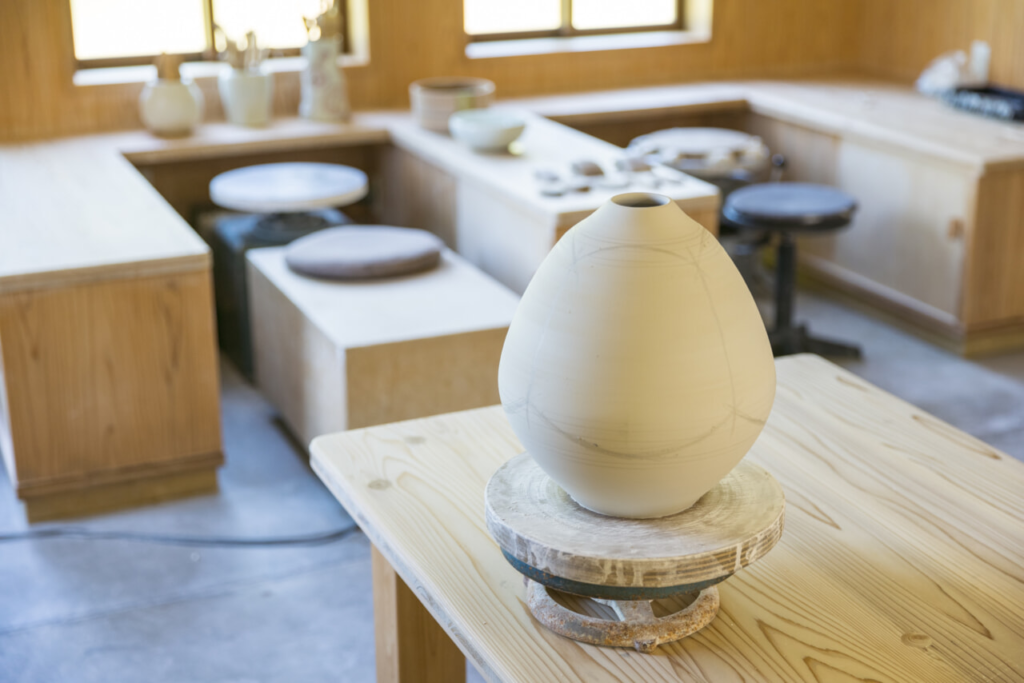
Growing up watching his father print woodblock prints as a hobby, Maeda’s interest in art naturally deepened. She loved to draw and joined the art club in high school, and then went on to the crafts department in college. He took a casual class in ceramics and became fascinated with the potter’s wheel. I could see myself improving day by day,” he said. I became fascinated with the idea of making something bigger than yesterday’s.” He was also introduced to white porcelain by a university student.
It was also when he was a university student that he first encountered white porcelain. I was impressed by its beauty.
In Tottori, it snows once or twice in winter. When I opened the window in the morning, the whole area was completely white. I was moved by the combination of that feeling and seeing white porcelain without pictures or colors, and I felt an attraction that I had never felt before.
Maeda’s desire to continue making ceramics after graduation continued to grow, and his teacher encouraged him to return to his parents’ home and open a kiln after graduation, saying, “No one has ever starved to death doing what they love. The name of the kiln is “Yanase Kiln. The name of the kiln is “Yanase Kiln,” which is derived from Mount Yanase, which rises majestically before his eyes.
Making white porcelain in Tottori
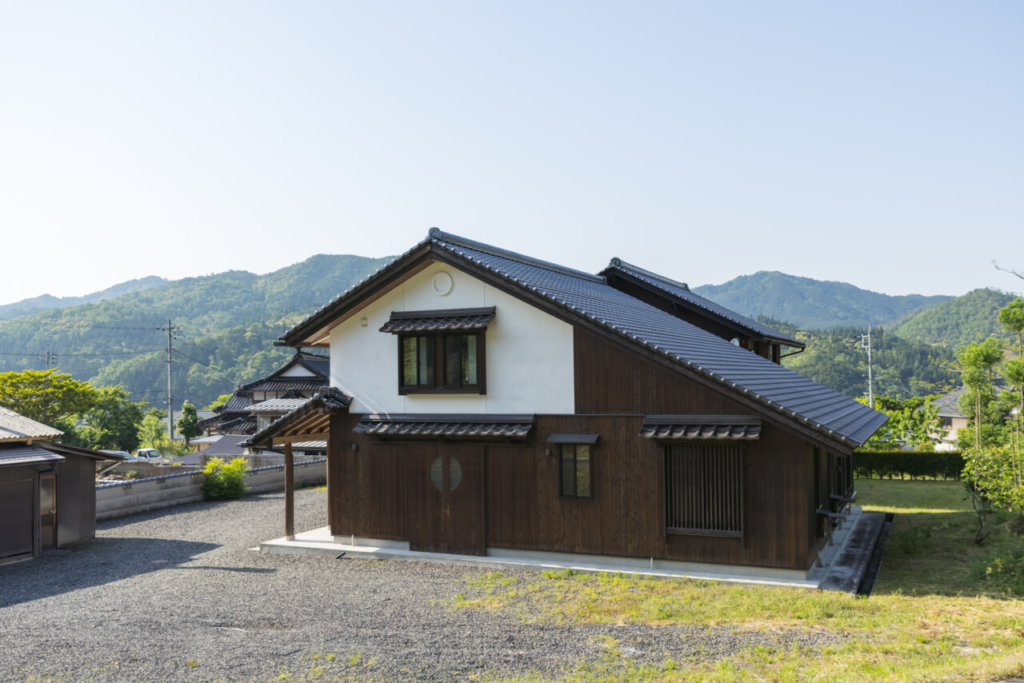
Tottori Prefecture is known for its folk crafts, and many of its ceramics have the texture of the clay, giving them a unique flavor. However, Mr. Maeda did not apprentice himself to another kiln, but chose to work alone on white porcelain out of a longing for white porcelain and a desire to master the potter’s wheel. However, making ceramics by himself was not so easy. Usually, one has to master basic techniques and processes before creating one’s own works. However, I did not have the basics. He continued to practice using the potter’s wheel, aiming to create what he considered to be a beautiful form.
A few years after returning to Tottori, I sometimes worried that I might not be able to do just what I liked. There were times when I became tired of facing white porcelain every day and worked on other pottery to which I would add pictures and decorations. However, I could not turn off my longing for white porcelain.
However, he was able to continue to create, thanks to the support of living with his parents and the encouragement of local people. When he got married and had a child, he helped his grandparents with their orchard in addition to his creative work. No matter how hard it was for her, she never stopped renting a gallery and holding a solo exhibition once a year and entering her work in pottery competitions to test her skills. Little by little, he won more and more prizes, and the number of people who supported him increased.
A turning point came at the age of 37.
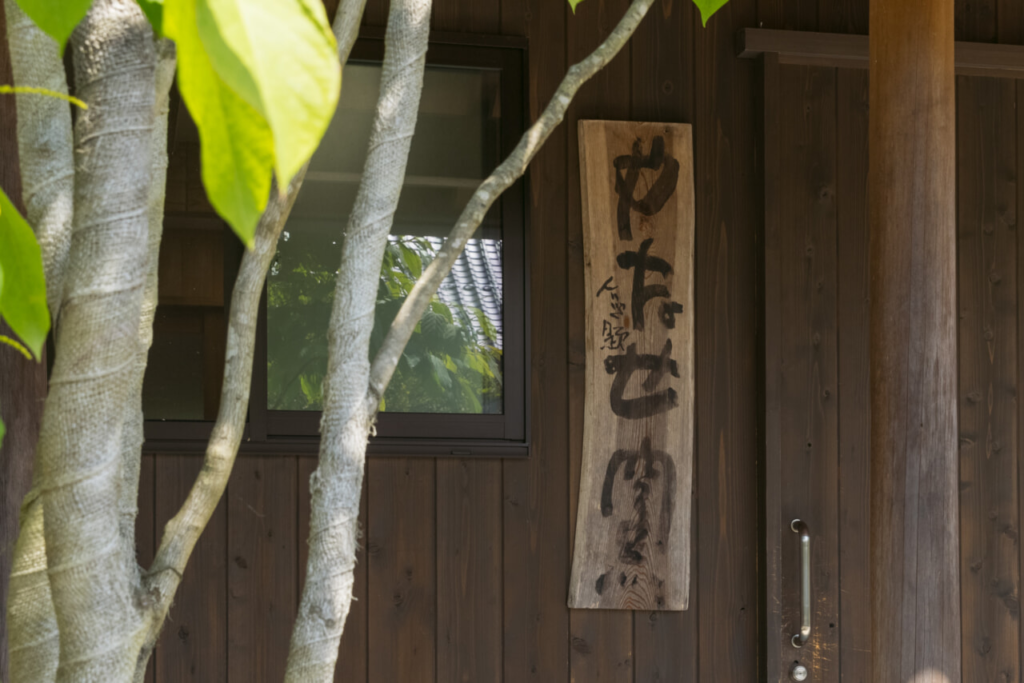
After 14 years of making white porcelain, Mr. Maeda reached a turning point. At the Japan Ceramic Art Exhibition, which is said to be the largest competition in the ceramic art world, Maeda was awarded the Grand Prize, followed by the Excellence Award.
I had always felt inferior to my contemporaries because they were doing better work than I was,” he said. But after receiving the award, I felt that I might be able to do ceramics for the rest of my life,” he said.
Since then, Mr. Maeda has continued to win awards in various competitions. He has held solo exhibitions and workshops not only in Japan but also overseas, gaining a large fan base.
In 2013, Maeda’s smooth white porcelain with flat and curved surfaces created by his unique “chamfering technique” was highly evaluated, and he was designated a Living National Treasure as an Important Intangible Cultural Property holder of white porcelain. He looks back, “I created this work on my own, not something I was taught, so I think they appreciated that aspect of my work as well.
“Chamfering technique” born from failure

The unique softness and rounded shape are the result of the “chamfering technique,” which Mr. Maeda developed while making mistakes. When making white porcelain, it is common practice to fire porcelain formed on a potter’s wheel as it is. In contrast, in the chamfering technique, the clay is formed on the potter’s wheel, and the artist presses it directly with his fingers to deform it while watching for the timing when it dries. This method was born out of a lack of knowledge of the basics of porcelain clay, which can later become damaged if it is pressed or deformed.
At first, I used to beat the clay with a board to deform it, but it cracked when it dried,” he said. So I tried holding it down with my fingers little by little, and it fit better. From there, this technique became my expression,” he says.
After pressing with his finger multiple times in a fine pointillist manner, he dries the surface further and then shaves it with a planer. This process brings a clear surface to the surface.
When he was young, he used a ruler to make even marks when chamfering and dividing equally. However, it was not interesting in any way. As the years went by, he began to draw lines freehand, and he began to be attracted to parts that were biased to the left or right, or wavy.
I thought, “This way the lines and surfaces are becoming more like me. I would say that over the years I have come to be able to forgive that slight. I feel that it is human beings who can draw lines that are more attractive than rulers.
A world view brought about by time and the climate of Tottori
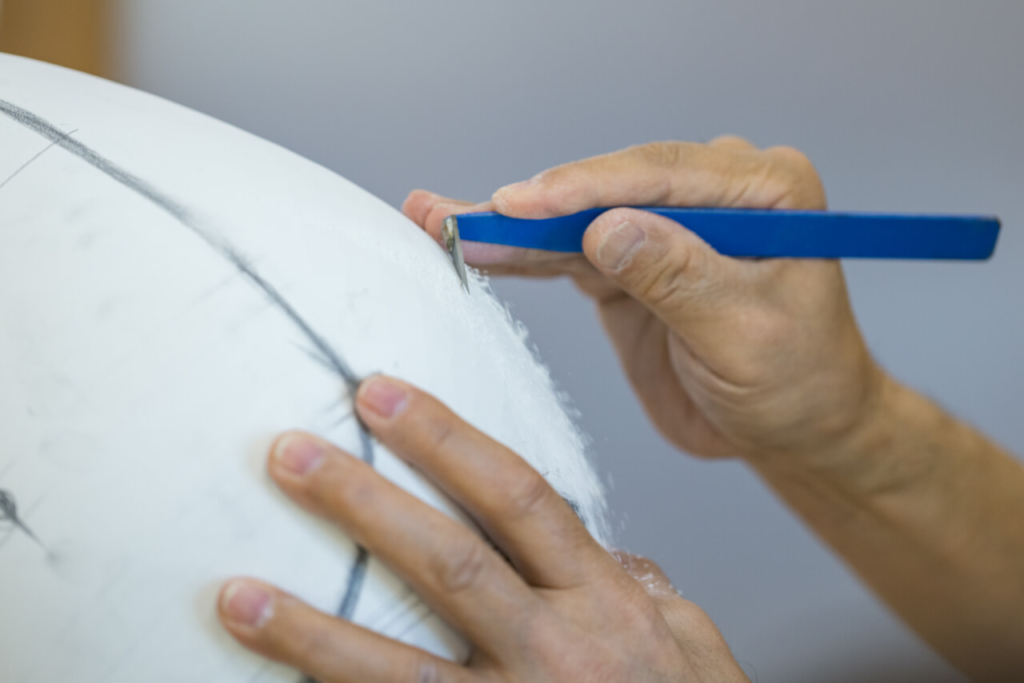
After being involved in creating works for so long, one would think that he would run out of ideas. In fact, he says that after his annual exhibition, he feels as if he “can’t make any more. However, when he starts creating anew, images of works he would like to make come to his mind. In addition, during the process of creation, a shape or “something” that he likes comes to him by chance, and he sometimes gives shape to it. Maeda’s own sensitivity and coincidence. Both of these factors give birth to his works, and the range of his creations has expanded.
I have no choice but to give form to what I am thinking and acting on what I am thinking and acting on. Even if the result is not a good work, I have to take responsibility and go to the end with the attitude I want to have. That is why the desire to create something wonderful is the only thing that is in the back of my mind 24 hours a day.
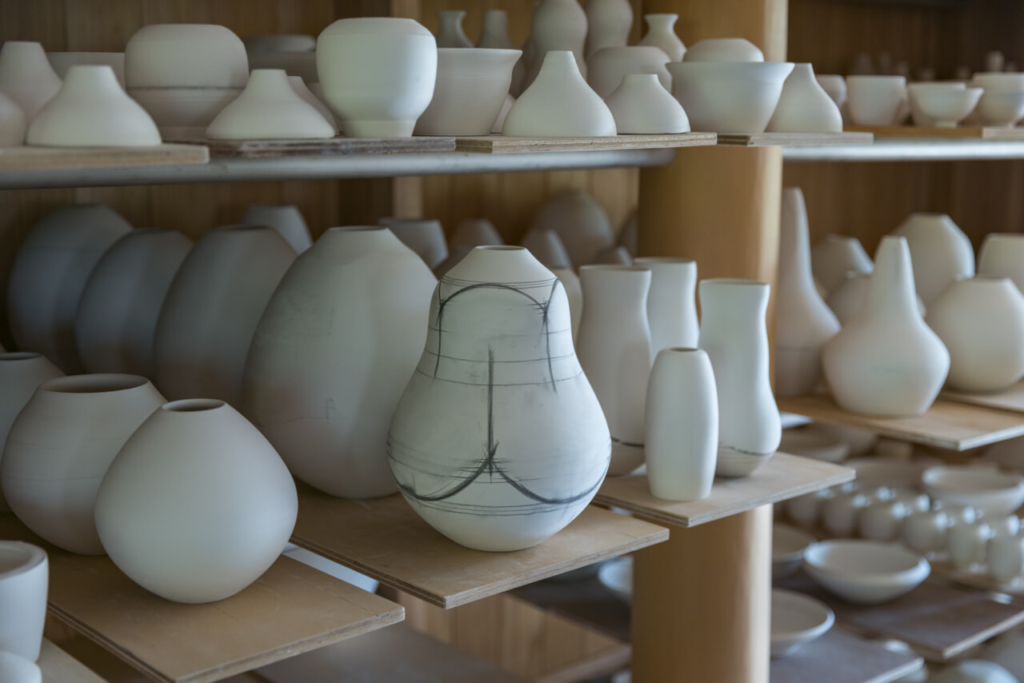
The climate of Tottori also had a major influence on the creation of the work. Tottori has rather cloudy skies and high humidity. I was particular about the moist glaze, and the soft shading in my work was a result of the climate,” he recalls. In the beginning, it was difficult for him to learn the techniques by himself, but because it is not a white porcelain production center, information does not come to him unless he goes there to get it himself. That is why it was comfortable for Mr. Maeda, and he was able to keep his desire to continue making white porcelain until the end.
It is likely that Maeda’s various failures, experiences, and environment have given birth to unique expressions and forms that only he can create.
Seeking for a work that will make people feel the charm of “absence”.

What is shirashi? In response to this question, Mr. Maeda told us that it is “something that has the charm of ‘absence'”. It flourished during the Tang Dynasty in China, was introduced to Japan, and has continued to the present day. There is no flamboyant decoration or change of color. Nevertheless, the reason why it continues to this day is probably because even in its “empty” state, the forms and glazes have a rich charm. Mr. Maeda says that he wants to create shirashi ceramics that are only possible in this age of information, color, and ideas.
I think Japanese-style paintings such as Kutani-yaki and Arita-yaki are beautiful. At the same time, it is good to have a world “without” such things. I would like to create something that is as good as or even better than what is there, while omitting pieces of artwork.” If I can convey the charm of “absence,” I think I can pass on this shirashi to the next generation. Therefore, there is a definition of ‘shirashi’ that is not just white pottery. That’s what I think.
Saying this, Mr. Maeda heads for the potter’s wheel again today.




